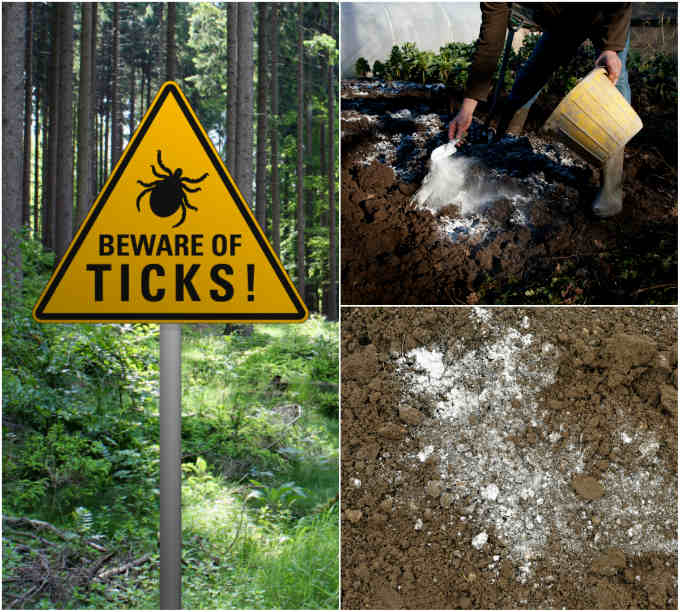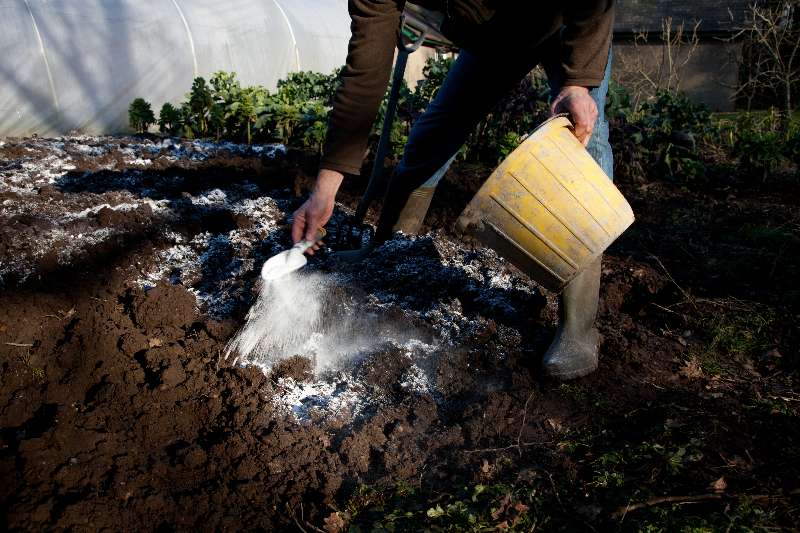How to Use Lime to Kill Ticks

Make sure to like Living Green and Frugally on Facebook, Shop at Amazon to help support my site and explore our PINTEREST BOARDS for innovative ways you can become self-sufficient.
Ticks are tiny, parasitic arachnids that pose a significant threat to both humans and pets. Known carriers of diseases such as Lyme disease, anaplasmosis, and Rocky Mountain spotted fever, ticks can make your garden a hazardous place. Fortunately, lime offers a natural and effective solution for controlling tick populations in your outdoor spaces. This article will explain how to use lime to kill ticks and why it is a beneficial addition to your garden maintenance routine.
Understanding Lime and Its Properties
Lime, also known as calcium carbonate, is a naturally occurring mineral that is commonly used to adjust soil pH and improve soil health. There are two main types of lime used in gardening:
- Agricultural Lime (AgLime): This is finely ground limestone or chalk and is primarily used to neutralize soil acidity.
- Hydrated Lime: This is calcium hydroxide, a more potent form of lime, and is often used in construction but can also be used in gardening with caution.
For tick control, both types of lime can be effective, but agricultural lime is generally safer and easier to use.
How Lime Kills Ticks
Ticks thrive in moist, acidic environments with plenty of shade and leaf litter. Lime works against ticks by:
- Altering Soil pH: Lime increases the pH level of the soil, making it less acidic and more alkaline. Ticks prefer acidic environments, so altering the pH makes the area less hospitable for them.
- Dehydration: Lime has drying properties. When applied to the soil and leaf litter, it can desiccate the ticks, leading to their death.
- Deterrent: The alkaline environment created by lime is less favorable for ticks to lay eggs and develop, reducing their population over time.
Step-by-Step Guide to Using Lime in Your Garden
Materials Needed
- Agricultural lime or hydrated lime
- Garden gloves
- Protective eyewear and mask (especially when handling hydrated lime)
- Spreader (for large areas)
- Watering can or garden hose
Application Steps
- Identify Tick-Prone Areas: Ticks are often found in shaded areas, tall grasses, and places with dense vegetation. Focus your lime application on these areas.
- Clear Debris: Remove leaf litter, tall grass, and weeds where ticks are likely to hide.
- Apply Lime:
- For Agricultural Lime: Spread a thin layer evenly over the tick-prone areas using a spreader for large spaces or by hand for smaller spots. Aim for a coverage of about 50 pounds per 1,000 square feet.
- For Hydrated Lime: Apply more sparingly due to its potency. Ensure you’re wearing protective gear to avoid skin and eye irritation.
- Water the Area: Lightly water the treated areas to help the lime settle into the soil. This will also activate the lime, enhancing its effectiveness.
- Reapply as Needed: Depending on the severity of the tick infestation and weather conditions, you may need to reapply lime every few months. Regular applications in spring and summer are often most effective.

Safety Precautions
- Protective Gear: Always wear gloves, a mask, and protective eyewear when handling lime, especially hydrated lime.
- Pet and Child Safety: Keep pets and children away from treated areas until the lime has been watered in and the area has dried.
- Follow Instructions: Always follow the manufacturer’s instructions for the correct amount and method of application.
Benefits of Using Lime
- Natural and Non-Toxic: Lime is a natural product that does not introduce harmful chemicals into your garden.
- Soil Health: In addition to killing ticks, lime improves soil structure and fertility by neutralizing acidity.
- Cost-Effective: Lime is relatively inexpensive compared to chemical pesticides.
Conclusion
Using lime to kill ticks in your garden is an effective, natural, and environmentally friendly approach. By altering the soil pH and creating an inhospitable environment for ticks, you can significantly reduce their population and the risk of tick-borne diseases. Remember to follow safety guidelines and reapply as necessary to maintain a tick-free garden. With these steps, you can enjoy your outdoor spaces with greater peace of mind.